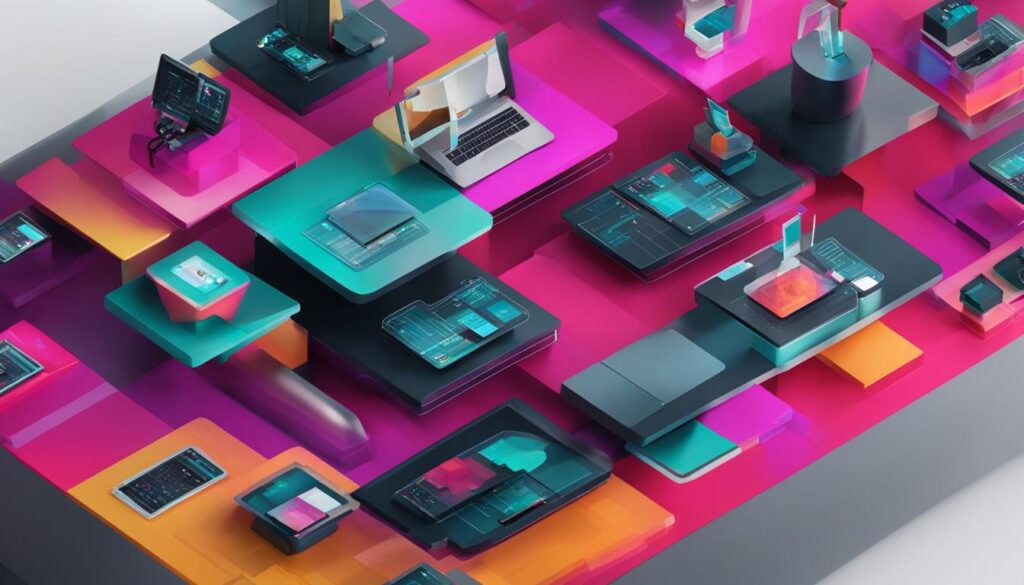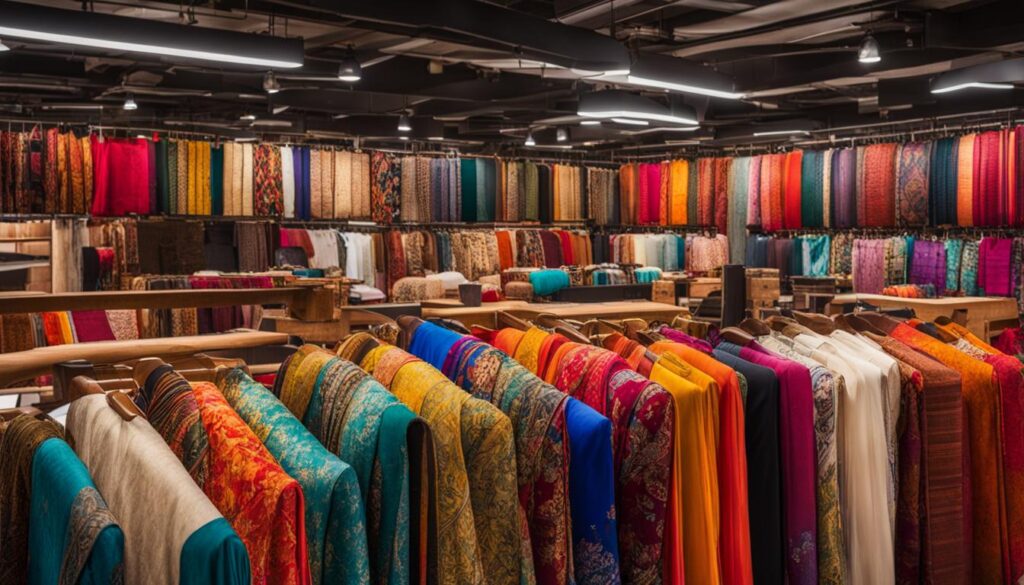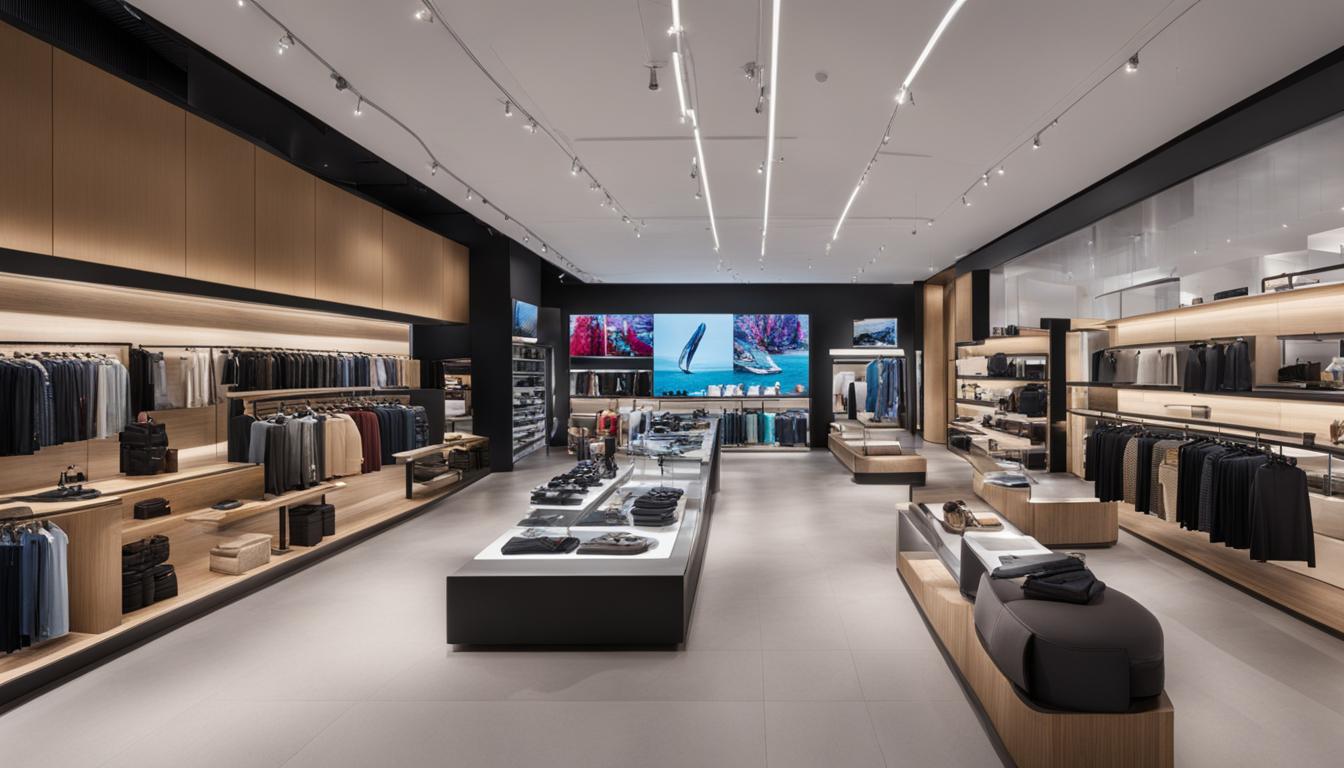The fashion industry is increasingly embracing information technology (IT) solutions to enhance and revolutionize the field of fashion merchandising. From digitalization and tech-supported processes to data-driven optimization and seamless customer experiences, IT is playing a crucial role in shaping the future of the fashion industry. The recently concluded Apparel Sourcing Week 2023 showcased the growing significance of fashion technology, with young entrepreneurs embracing technology for growth and advancements transforming the fashion supply chain. India’s fashion landscape emerged as a thriving ecosystem for Indian-origin brands and tech companies, emphasizing the industry’s commitment to sustainability, efficiency, and consumer-centric experiences.
Contents
- 1 Rise of D2C: Young Entrepreneurs Embrace Technology for Growth
- 2 Catalyst for Innovations: Advancements Transforming the Fashion Supply Chain
- 3 India’s Fashion Landscape: A Thriving Ecosystem for Indian-Origin Brands and Tech Companies
- 4 Less is More during Economic Uncertainty: Embracing Leaner Business Models
- 5 Conclusion
- 6 FAQ
- 6.1 How is information technology used in fashion merchandising?
- 6.2 What role does IT play in fashion merchandising?
- 6.3 How are D2C brands embracing technology for growth in the fashion industry?
- 6.4 How is technology transforming the fashion supply chain?
- 6.5 What is the fashion landscape like in India?
- 6.6 How can fashion brands adapt during economic uncertainty?
- 7 Source Links
Key Takeaways:
- IT solutions are driving digitalization and revolutionizing fashion merchandising.
- Fashion technology is transforming the fashion supply chain, enabling efficiency and sustainability.
- Young entrepreneurs are embracing IT to fuel growth and innovation in the industry.
- India’s fashion landscape is a hub for Indian-origin brands and tech companies.
- Adopting leaner business models and cost discipline is crucial in times of economic uncertainty.
Rise of D2C: Young Entrepreneurs Embrace Technology for Growth
The fashion industry is witnessing a significant rise in Direct-to-Consumer (D2C) brands, with young entrepreneurs at the forefront. These tech-savvy founders, primarily based in startup hubs like Bengaluru and Mumbai, are leveraging fashion technology to drive their businesses forward. By embracing digitalization, tech-supported processes, and data-driven optimization, these ambitious D2C brands are revolutionizing the industry and setting new standards for growth and market reach.
D2C brands are reshaping the fashion industry by leveraging technology to streamline their operations and enhance customer experiences. They understand the power of data and how it can drive business decisions, optimize processes, and improve overall efficiency. By harnessing the potential of digital tools and technologies, these brands are paving the way for a more connected and seamless fashion ecosystem.
One of the key aspects of D2C brands is their ability to establish a direct relationship with their customers. With the help of technology, they can create personalized experiences, tailor their offerings to individual preferences, and provide exceptional customer service. This direct connection allows them to gather valuable insights, analyze data, and make informed decisions to continuously optimize their products and services.
The rise of D2C brands also brings about a shift in the traditional retail model. By bypassing intermediaries and selling directly to consumers, these brands can offer high-quality products at competitive prices. This not only benefits the brands themselves but also provides consumers with greater value and access to exclusive products.
By embracing digitalization, tech-supported processes, and data-driven optimization, these ambitious D2C brands are revolutionizing the industry and setting new standards for growth and market reach.
Moreover, D2C brands are often characterized by their agility and adaptability. By utilizing technology, they can quickly respond to changing market trends, consumer demands, and industry disruptions. This enables them to stay ahead of the competition and consistently innovate their offerings.
Overall, the rise of D2C brands in the fashion industry is a testament to the power of technology in driving growth and transformation. These young entrepreneurs understand the importance of digitalization, data-driven decision-making, and leveraging tech-supported processes to succeed in the evolving landscape of fashion. As they continue to embrace technology for growth, they are reshaping the industry, setting new benchmarks, and inspiring others to follow suit.
Benefits of D2C Brands in the Fashion Industry
Here are some key benefits that D2C brands bring to the fashion industry:
- Direct customer engagement and relationship-building
- Ability to gather and analyze valuable customer data for informed decision-making
- Streamlined operations and improved efficiency
- Opportunity to offer personalized and tailored experiences
- Enhanced control over brand image and customer experience
- Elimination of middlemen, leading to cost savings and competitive pricing
- Faster response to market trends and consumer demands
Table: Comparative Analysis of D2C Brands vs. Traditional Retail
| D2C Brands | Traditional Retail | |
|---|---|---|
| Direct Customer Relationship | ✅ | ❌ |
| Data-driven Decision-making | ✅ | ❌ |
| Operational Efficiency | ✅ | ❌ |
| Personalization | ✅ | ❌ |
| Brand Control | ✅ | ❌ |
| Cost Savings | ✅ | ❌ |
| Agility | ✅ | ❌ |
As shown in the table above, D2C brands have several advantages compared to traditional retail. From direct customer relationships to operational efficiency and cost savings, D2C brands are redefining the fashion industry with their tech-forward approach.
Catalyst for Innovations: Advancements Transforming the Fashion Supply Chain
The fashion supply chain is undergoing a digital transformation, thanks to advancements in technology. At Apparel Sourcing Week 2023, various technology companies showcased their innovative solutions that are revolutionizing the supply chain.
One such advancement is the integration of 3D fashion design software, which enables efficient visualization, iteration, and finalization of designs. This revolutionary tool streamlines the product development process, empowering designers to bring their creations to life with precision and speed.
Another area of focus is sustainability. Fashion waste processing has become a critical aspect of the supply chain, with companies implementing strategies to minimize environmental impact. Carbon tracing solutions are being utilized to track and reduce carbon emissions, ensuring a more sustainable and eco-friendly approach.
Improving customer satisfaction is also a key objective of these advancements. Technical sizing and 3D fitting tools allow customers to find the perfect fit from the comfort of their homes. By eliminating the guesswork, these tools enhance the online shopping experience and reduce the likelihood of returns.
Furthermore, AI-based virtual fitting rooms and smart mirror-driven phygital experiences are elevating the fashion retail experience. These technologies enable customers to try on virtual outfits and receive personalized recommendations, bridging the gap between the online and offline shopping worlds.
“The integration of innovative tools and sustainable practices in the fashion supply chain is driving efficiency, improving customer experiences, and paving the way for a more sustainable future.”
With each technological advancement, the fashion supply chain continues to evolve, creating opportunities for innovation and improvement. By embracing these advancements, the fashion industry is shaping a future that is not only efficient but also sustainable and customer-centric.

Innovations Transforming the Fashion Supply Chain
| Advancement | Description |
|---|---|
| 3D fashion design software | A tool that enables efficient visualization, iteration, and finalization of designs, revolutionizing the product development process. |
| Carbon tracing solutions | Tools used to reduce environmental impact by tracking and minimizing carbon emissions in the fashion supply chain. |
| Technical sizing and 3D fitting tools | Technologies that enhance customer satisfaction by providing accurate sizing information and virtual fitting experiences. |
| AI-based virtual fitting rooms | Virtual environments where customers can try on outfits and receive personalized recommendations, enhancing the online shopping experience. |
| Smart mirror-driven phygital experiences | Interactive mirrors that bridge the gap between online and offline shopping by providing virtual try-on and product information. |
India’s Fashion Landscape: A Thriving Ecosystem for Indian-Origin Brands and Tech Companies
The fashion landscape in India has become a thriving ecosystem for Indian-origin brands and tech companies. With hubs like Bengaluru and Mumbai at the forefront of fashion technology startups, the country is witnessing a convergence of fashion and technology. This fusion is driven by advancements in artificial intelligence, virtual reality, sustainable practices, manufacturing, and technology expertise.
Indian fashion industry pioneers are harnessing the power of artificial intelligence (AI) to drive innovation and efficiency. By leveraging AI technologies, such as machine learning algorithms and predictive analytics, they are able to analyze consumer data, identify trends, and make data-driven decisions that influence product development, marketing strategies, and supply chain management.
Additionally, virtual reality (VR) is revolutionizing the way Indian-origin fashion brands engage with their audience. Through VR experiences, consumers can virtually try on clothing, visualize fashion collections, and participate in immersive brand experiences. This innovative use of technology not only enhances customer engagement but also reduces the need for physical prototypes and wasteful manufacturing practices.

The integration of sustainable practices in the Indian fashion industry is another key driver of growth. From eco-friendly materials sourcing to responsible manufacturing processes, Indian-origin brands are prioritizing sustainability. This commitment is not only environmentally conscious but also aligned with evolving consumer demands for ethical and eco-conscious fashion.
India’s rich manufacturing and technology expertise allows for seamless supply chain management. By leveraging advanced technologies, such as RFID tracking and real-time inventory management systems, Indian-origin brands are streamlining their operations and delivering products efficiently, ensuring timely availability and reducing wastage.
Furthermore, the collaboration between hybrid manufacturers, who showcase their own brands alongside fashion technology companies, showcases the inclusive nature of the Indian fashion landscape. This symbiotic relationship fosters knowledge exchange, technological advancements, and promotes innovation throughout the industry.
Innovative Product Development
The thriving Indian fashion ecosystem is driving innovative product development. By embracing cutting-edge technologies, fashion brands are pushing boundaries and creating unique offerings. Whether it is the integration of smart textiles, wearable technology, or interactive fashion accessories, Indian-origin brands are redefining the fashion industry by combining aesthetics with functionality.
The Indian fashion landscape is a testament to the power of collaboration, innovation, and embracing technology. As the industry continues to evolve, there is no doubt that India will remain a key player in shaping the future of fashion.
| Key Advantages of the Indian Fashion Landscape: |
|---|
| 1. Thriving ecosystem for Indian-origin brands and tech companies |
| 2. Integration of artificial intelligence and virtual reality |
| 3. Emphasis on sustainable practices and responsible manufacturing |
| 4. Manufacturing and technology expertise enabling seamless supply chain management |
| 5. Collaboration between hybrid manufacturers and fashion tech companies |
| 6. Driving innovative product development through cutting-edge technologies |
Less is More during Economic Uncertainty: Embracing Leaner Business Models
In periods of economic uncertainty and rising costs, fashion brands are embracing leaner business models. The challenging economic environment calls for a more strategic approach to operations and cost management. By adopting leaner business models, brands can navigate the uncertainties and maintain profitability.
Reduced Product Assortment
A key aspect of leaner business models is reducing product assortment. By focusing on core products, brands can optimize inventory management, maximize sell-through, and minimize the need for markdowns. This not only improves profitability but also allows brands to maintain a stronger market presence by offering a curated selection of products that align with consumer demand and current trends.
Streamlined Brand Narratives
Another strategy for leaner business models is streamlining brand narratives. Brands can focus on communicating their unique value proposition and core messaging to establish a stronger brand identity. By simplifying and reinforcing brand narratives, brands can create a more cohesive and memorable brand experience for consumers, leading to increased brand loyalty and customer engagement.
Tighter Cost Discipline
Embracing tighter cost discipline is crucial in leaner business models. Brands need to evaluate their expenses and identify areas for cost optimization and efficiency improvements. This can involve renegotiating supplier contracts, seeking alternative sourcing options, or implementing cost-saving measures across various operational processes. By tightening cost discipline, brands can ensure that every dollar earned and saved goes further in maintaining financial stability and competitiveness.
Overall, embracing leaner business models is essential for fashion brands facing economic uncertainty and rising costs. By reducing product assortment, streamlining brand narratives, and enforcing tighter cost discipline, brands can navigate challenges and position themselves for success in a rapidly changing industry.
Conclusion
Information technology is revolutionizing the fashion merchandising industry, empowering brands to enhance efficiency and provide exceptional customer experiences. By embracing IT solutions, the fashion industry is undergoing a digital transformation, prioritizing sustainability, and adopting leaner business models. Through the integration of advanced technology in the fashion supply chain and the rise of D2C brands, the industry demonstrates its commitment to innovation and continuous improvement.
As the fashion industry navigates economic uncertainty, optimizing merchandising activities becomes vital. By leveraging IT solutions and embracing the evolving merchandising model, brands can overcome challenges and pave the way for success and growth. The integration of IT enables the industry to streamline operations, optimize inventory management, and create personalized customer experiences that drive loyalty and satisfaction.
Moreover, the fashion industry’s focus on sustainability has been bolstered by IT solutions, enabling brands to adopt eco-friendly practices, reduce waste, and trace their environmental impact. The use of technology also allows brands to design and develop products with precision and efficiency, leveraging tools like 3D fashion design software and AI-driven virtual fitting rooms.
In conclusion, as the fashion industry continues to evolve, IT solutions play a crucial role in shaping its future. By embracing digital transformation, sustainability, and leaner business models, fashion brands can stay ahead of the curve, meet evolving customer demands, and navigate the ever-changing industry landscape.
FAQ
How is information technology used in fashion merchandising?
Information technology is used in fashion merchandising to enhance efficiency and customer experiences. It includes digitalization, tech-supported processes, data-driven optimization, and seamless customer experiences.
What role does IT play in fashion merchandising?
IT plays a pivotal role in fashion merchandising by driving digital transformation, prioritizing sustainability, and adopting leaner business models.
How are D2C brands embracing technology for growth in the fashion industry?
D2C brands are embracing technology by leveraging digitalization, tech-supported processes, and data-driven optimization to streamline their operations and enhance customer experiences.
How is technology transforming the fashion supply chain?
Technology is transforming the fashion supply chain through innovative tools like 3D fashion design software, sustainability solutions, AI-based virtual fitting rooms, and smart mirror-driven phygital experiences.
What is the fashion landscape like in India?
The fashion landscape in India is a thriving ecosystem for Indian-origin brands and tech companies, leveraging advancements in artificial intelligence, virtual reality, and sustainable practices for seamless supply chain management and innovative product development.
How can fashion brands adapt during economic uncertainty?
Fashion brands can adapt during economic uncertainty by embracing leaner business models, reducing product assortment, streamlining brand narratives, and implementing tighter cost discipline.




